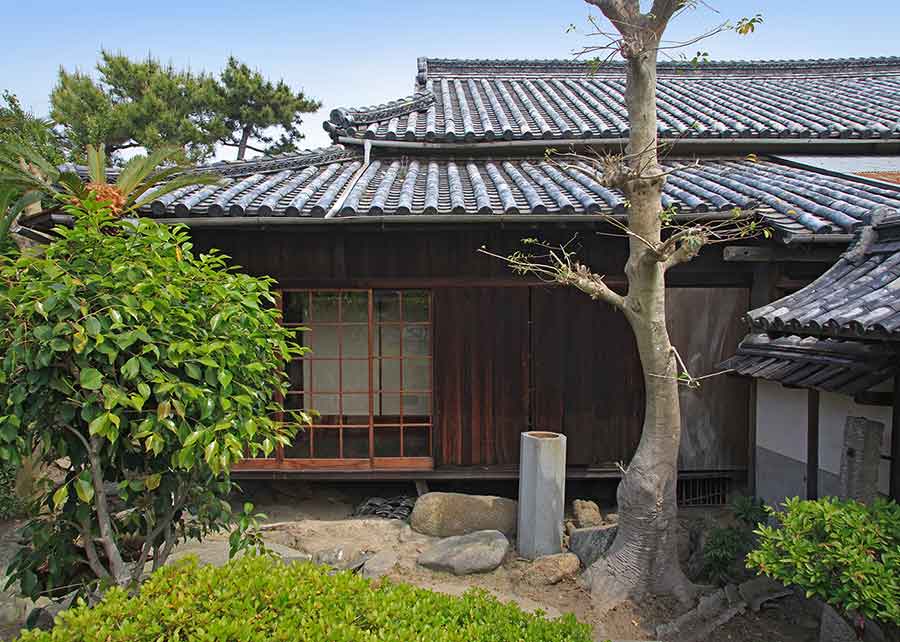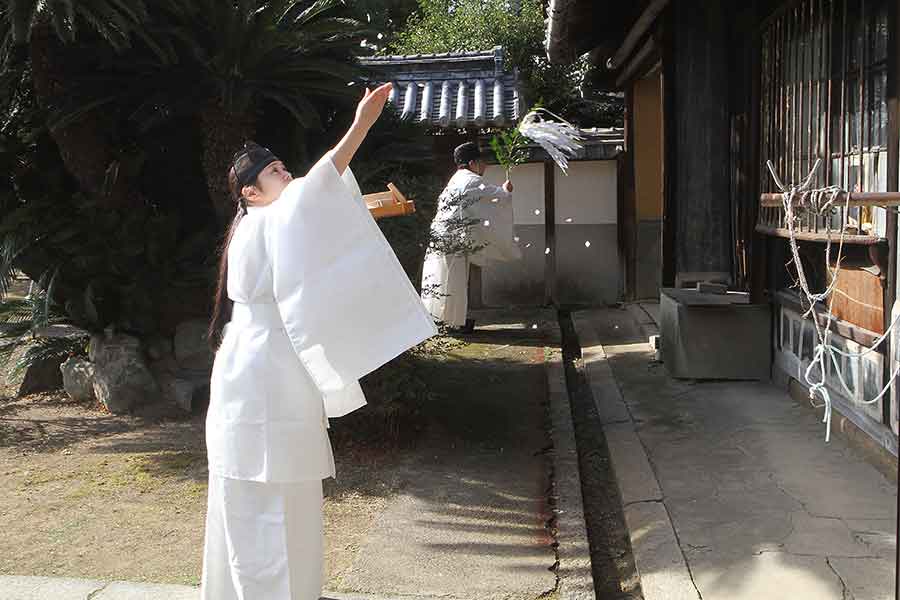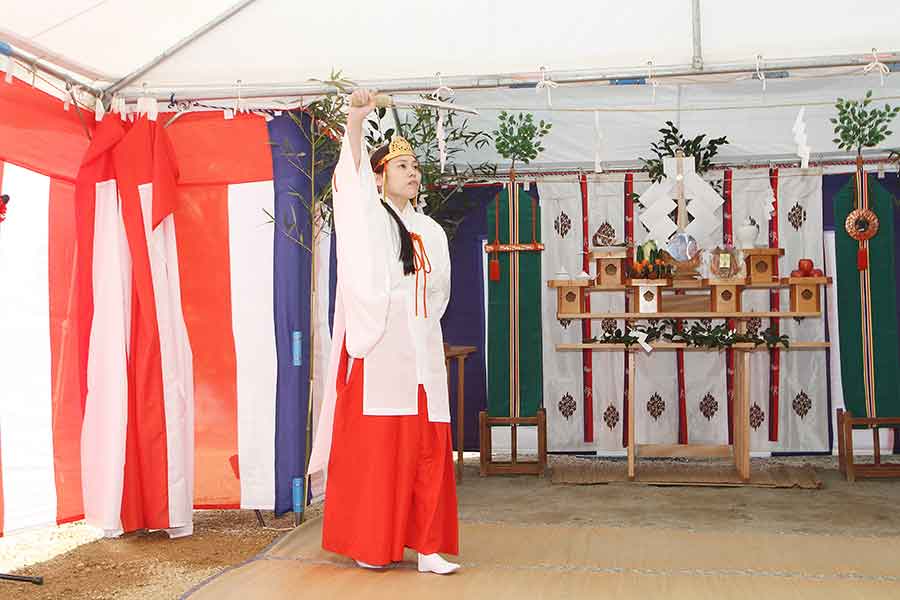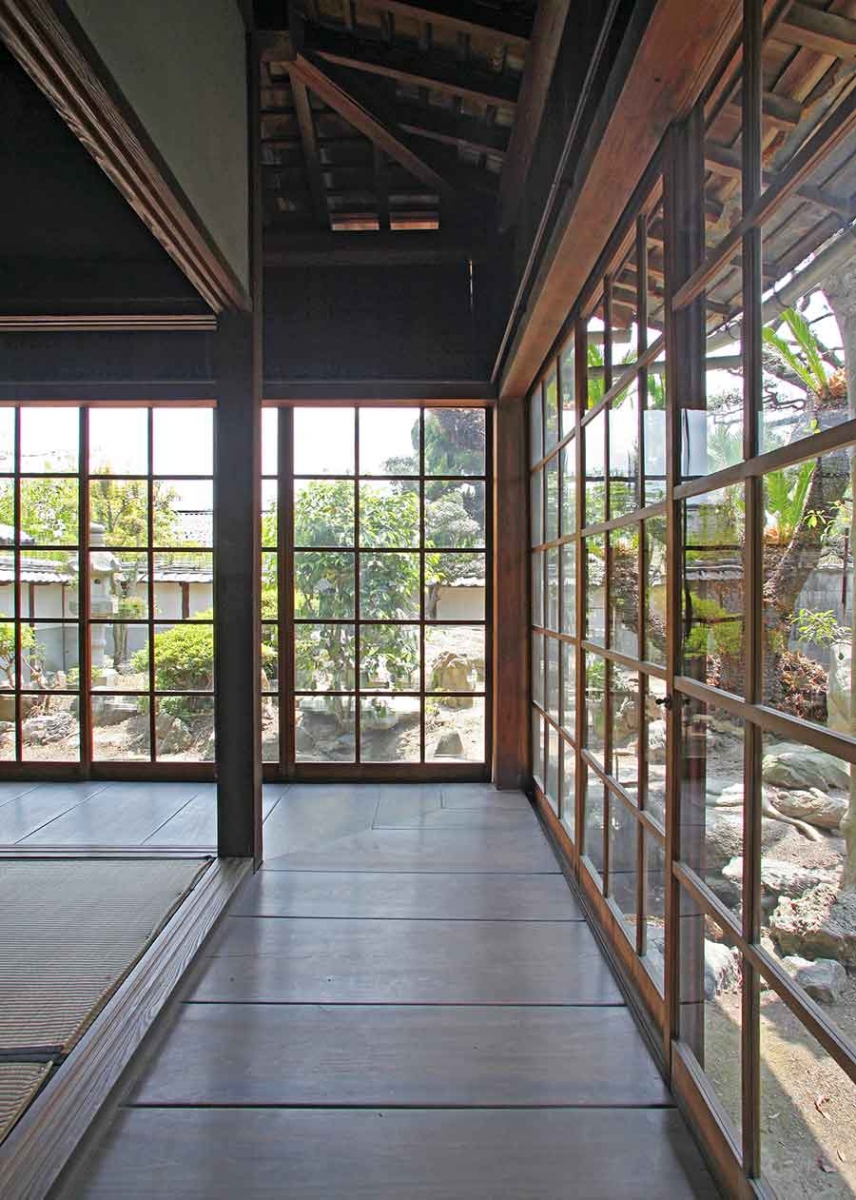The Huntington’s blog takes you behind the scenes for a scholarly view of the collections.
Japanese Heritage House
Posted on Wed., March 13, 2019 by

Exterior of the Magistrate’s House, built in the 1690s. The historic home of the Yokoi family of Marugame, Japan, has been given to The Huntington. Photo by Hiroyuki Nakayama. The Huntington Library, Art Collections, and Botanical Gardens.
In February, The Huntington announced that it had acquired a 320-year-old Magistrate's House from Marugame in Japan's Kagawa Prefecture. Shortly before the news broke, a vital precursor to moving this center of village life to its new home took place. A priest and a shrine attendant, robed in white, performed a traditional Shinto ceremony to ensure the success of the project.
“The house and grounds could not be disturbed without the blessings of the local gods, the sacred spirits,” explains Robert Hori, cultural curator and program director for The Huntington’s Botanical Gardens. The celebrants prayed that the project to transfer the house to The Huntington would go smoothly—and also prayed for the well-being of everyone involved.

During part of the traditional Shinto ceremony to ensure the success of the project to move the Magistrate’s House to The Huntington, a priest swished a leafy branch, hung with lightning-bolt-shaped strips of paper, in front of the house, while a shrine attendant tossed white confetti in the air. Photo by Hiroyuki Nakayama. The Huntington Library, Art Collections, and Botanical Gardens.
The ceremony incorporated several items of symbolic importance to Shinto: a mirror to represent light; a sword, valor; and a jade jewel, benevolence. A plaited rope was stretched in front of the house to create a sacred precinct. During part of the ceremony, the priest swished a leafy branch, hung with lightning-bolt-shaped strips of white paper, in front of the house while the shrine attendant tossed white confetti in the air.
The ancient folk beliefs and deities of Shinto are deeply rooted in the community, as is the Magistrate’s House itself. More than 300 years ago, the Yokoi family were installed as magistrates of the small farming district of Marugame. Their residence functioned much like a combined town hall and village square. Magistrates were responsible for preserving each year’s seed crop, managing the district’s water supply, and celebrating major life events.

A shrine attendant performs a traditional dance with a sword and dagger before a Shinto altar as part of a ritual purification ceremony to ensure the success of the relocation project. Photo by Hiroyuki Nakayama. The Huntington Library, Art Collections, and Botanical Gardens.
Yohko and Akira Yokoi, who are committed to preserving their cultural heritage, offered their home to The Huntington in 2016. The house had been unoccupied for a number of years, and its neighborhood had become urbanized. Visits to Marugame by Huntington officials and study sessions with architectural experts led to the formation of a plan to transport the house and related structures to The Huntington.
The dismantling of the buildings and the restoration of their materials in Japan will take about a year. In addition to the house, two smaller kura or “treasure houses” that served as storage facilities for the village’s rice and family treasures are coming to The Huntington. Once the three buildings arrive at The Huntington, the house’s garden and gatehouse will be reconstructed according to their original plans. The compound will be built slightly to the north and west of the current Japanese house, between the Japanese and Chinese gardens.

Interior corridor of the Magistrate’s House, built in the 1690s, the historic home of the Yokoi family of Marugame, Japan. Sliding glass doors were added in the late 19th century. Photo by Hiroyuki Nakayama. The Huntington Library, Art Collections, and Botanical Gardens.
Preliminary estimates place the opening of the Magistrate’s House at The Huntington in the fall of 2020 or early 2021. The total cost of the project is roughly $9 million.
The Huntington’s Japanese Garden is a Western interpretation of a Japanese residence and stroll garden. The Magistrate’s House will offer immersion in Japanese culture from the late 17th century onward. No other public garden in North America possesses a feature of this kind.
“This will be an extraordinary example of the integration of garden, home, and traditional Japanese lifestyle,” says Robert Hori. “Visitors will have the opportunity to walk through the house, enter its rooms, handle objects, take a seat on the tatami mats, and contemplate the garden outside.”
Linda Chiavaroli is a volunteer in the office of communications and marketing at The Huntington.